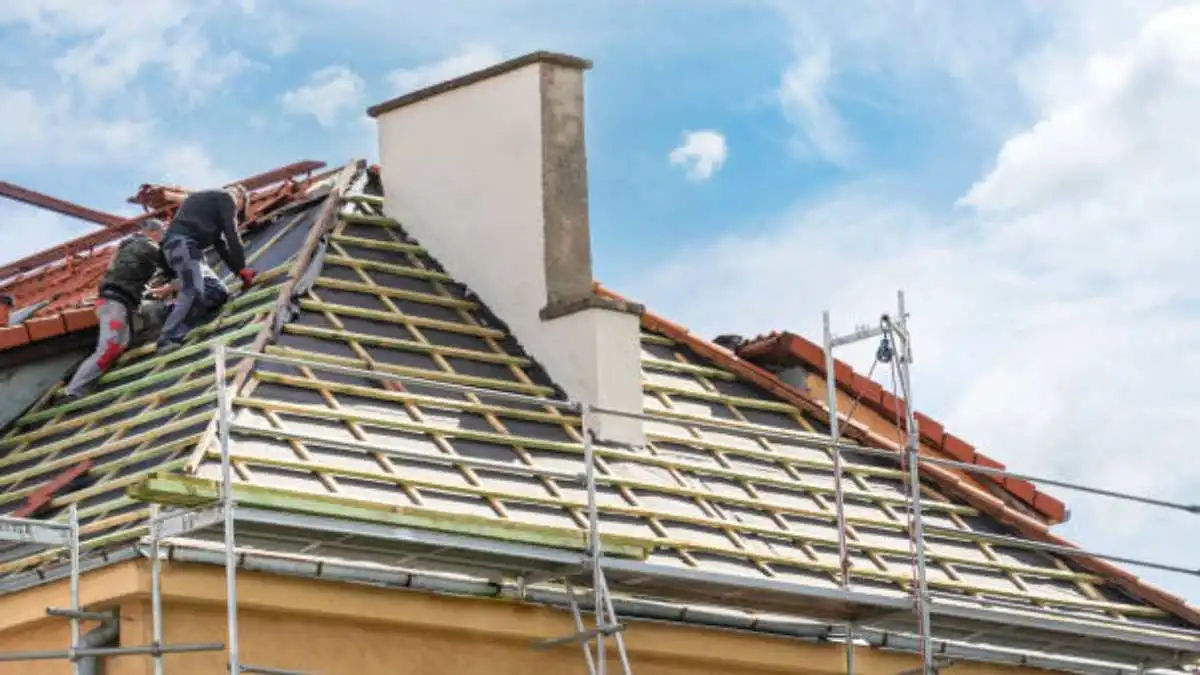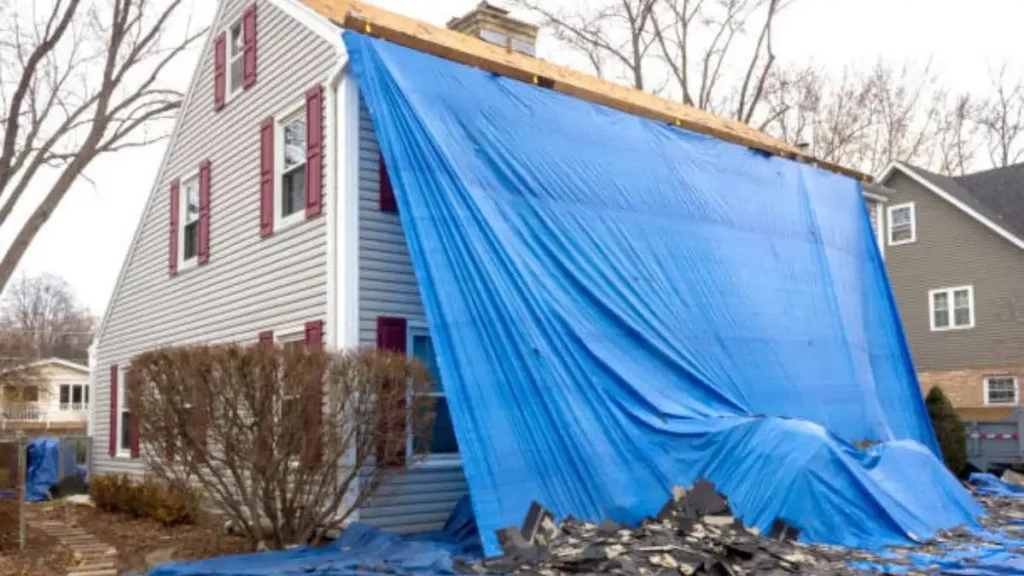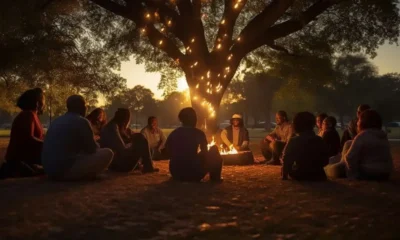HOME IMPROVEMENT
Is It Time for a Roof Replacement? Key Signs You Shouldn’t Ignore

Your roof is one of the most important parts of your home, protecting you and your family from the elements. Over time, however, even the sturdiest roof begins to show signs of wear and tear. While regular maintenance and minor repairs can extend the life of your roof, there comes a point when a full roof replacement is necessary to ensure the safety and longevity of your home.
Many homeowners overlook the early warning signs of a failing roof, which can lead to more extensive damage and costly repairs. In this article, we’ll outline the key signs that indicate it may be time for a roof replacement, and why acting quickly can save you money in the long run.
Table of Contents
1. Age of Your Roof
The first and most obvious factor to consider is the age of your roof. Different roofing materials have varying lifespans, and understanding how long your roof has been in place can give you a good idea of when a replacement may be necessary.
Typical Lifespans of Roofing Materials
- Asphalt Shingles: The most common roofing material, asphalt shingles, typically last between 20 and 25 years. However, some high-quality asphalt shingles can last up to 30 years with proper maintenance.
- Metal Roofing: Metal roofs are known for their durability, often lasting 40 to 70 years. They are highly resistant to weather conditions and require less frequent replacements than other materials.
- Slate and Tile: Slate and tile roofs are incredibly durable, with life spans ranging from 50 to over 100 years. However, their longevity depends on proper installation and maintenance.
If your roof is nearing the end of its expected lifespan, it’s a good idea to schedule a roof inspection with a professional roofing company like Sunrise Remodelers. Even if your roof seems to be holding up, age alone can make it more vulnerable to damage, and it may be time to consider a replacement.
2. Shingle Damage or Missing Shingles
One of the most visible signs that your roof is in need of attention is shingle damage. Asphalt shingles can begin to crack, curl, or warp as they age, especially when exposed to harsh weather conditions like strong winds, heavy rain, or intense heat.
Signs of Shingle Damage
- Cracked or Curled Shingles: If your shingles are curling at the edges or have visible cracks, it’s a clear sign that they are no longer providing adequate protection. This can leave your roof exposed to moisture, which can lead to leaks and further damage.
- Missing Shingles: Missing shingles can occur after a storm or due to the natural aging of the roof. If you notice patches of missing shingles, your roof’s structure may be compromised, making it more vulnerable to water damage.
- Granule Loss: Asphalt shingles have a layer of granules that protect them from UV rays and weather damage. Over time, these granules can wear away, leaving your roof susceptible to the elements. If you find granules collecting in your gutters or notice bald patches on your roof, it may be time for a roof replacement.
Regularly inspecting your roof for shingle damage is essential to catching problems early. While a few damaged shingles can be replaced, widespread damage is often a sign that the entire roof needs to be replaced.
3. Water Leaks and Stains
Water leaks are one of the most serious signs that your roof may need replacing. If you notice water stains on your ceilings, walls, or attic, it’s a clear indication that moisture is getting through the roof and into your home.
Where to Look for Signs of Leaks
- Ceilings and Walls: Water stains often appear as discolored patches on your ceilings or walls. These stains can be caused by moisture seeping through the roof during rainstorms or snowmelt. Over time, leaks can lead to mold growth, wood rot, and structural damage, making a roof replacement critical.
- Attic Inspections: If you have access to your attic, check for signs of moisture, such as damp insulation, water streaks, or mold. The attic is often the first place where leaks become noticeable, and early detection can prevent more extensive damage.
- Flashing Around Roof Penetrations: The flashing around chimneys, vents, and skylights is designed to prevent water from entering your home. However, if the flashing becomes damaged or loose, water can penetrate these vulnerable areas. If water is leaking around any roof penetrations, you may need a roof replacement to ensure proper sealing.
Ignoring leaks can lead to significant structural damage and costly repairs, so it’s essential to address the issue as soon as you notice it. A professional roofing company can assess the extent of the damage and determine whether a full replacement is necessary.

4. Sagging Roof Deck
A sagging roof deck is a serious structural issue that requires immediate attention. This problem occurs when the supporting structure of the roof begins to weaken, often due to prolonged exposure to moisture or excessive weight from snow and ice.
What Causes a Sagging Roof?
- Water Damage: When water leaks into the roof structure over time, it can cause the wooden beams and supports to weaken and rot. This can lead to a sagging or “dipped” appearance in certain areas of the roof.
- Excessive Weight: In regions with heavy snowfall, the weight of accumulated snow can put immense pressure on the roof, causing it to sag. Similarly, if the roof was not properly designed to handle the weight of roofing materials like slate or tile, structural problems can arise.
- Poor Installation: In some cases, a sagging roof may be the result of poor installation practices. If the roof was not built to code or was installed using subpar materials, it may not have the structural integrity needed to withstand the elements.
A sagging roof is a clear sign that your home’s structural integrity is at risk. In these cases, a full roof replacement is often the only solution to restore the roof’s strength and protect your home from further damage.
5. Rising Energy Bills
If you’ve noticed a sudden increase in your energy bills without a clear explanation, your roof could be to blame. An old or damaged roof can allow heat to escape during the winter and let hot air in during the summer, forcing your HVAC system to work harder to maintain a comfortable temperature.
How Roof Damage Affects Energy Efficiency
- Insufficient Insulation: Over time, roofing materials can lose their insulating properties, allowing heat to transfer more easily between the interior and exterior of your home. Poor insulation means your heating and cooling systems need to use more energy to keep the indoor temperature stable.
- Air Leaks: Cracked shingles, gaps in the roof, or damaged flashing can allow air to leak in and out of your home, leading to drafts and increased energy usage. If your home feels drafty or your HVAC system is running more frequently, it may be time to consider a roof replacement.
Upgrading to modern roofing materials with better insulation can help reduce energy costs, improve indoor comfort, and increase the overall energy efficiency of your home.
Conclusion: Don’t Ignore the Signs—Consider a Roof Replacement
Your roof is your home’s first line of defense against the elements, and ignoring the signs of damage can lead to bigger problems down the road. Whether you’re dealing with missing shingles, water leaks, or a sagging roof, it’s essential to address these issues promptly to protect your home’s structure and your family’s safety.
If you’ve noticed any of these warning signs, it’s time to consider scheduling a roof inspection with experienced professionals like Sunrise Remodelers. By replacing your roof before the damage becomes severe, you’ll save money in the long run, improve your home’s energy efficiency, and ensure that your roof continues to provide reliable protection for years to come.
-

 GENERAL6 months ago
GENERAL6 months agoChristofle – For Those Who Dream of Family Heirloom Silver
-

 SPORTS8 months ago
SPORTS8 months agoDiscover the World of Football with Streameast: Watch Your Favorite Leagues and Tournaments
-

 GENERAL4 months ago
GENERAL4 months agoUncovering the World of кинокрадко: The Dark Side of Film Piracy
-

 GENERAL2 months ago
GENERAL2 months agoATFBooru: Anime, Gaming, and Subculture Imageboard


























